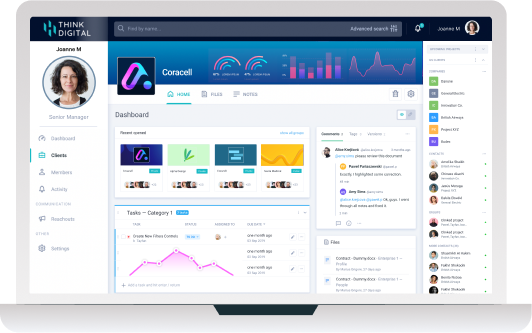Continuing on with our exploration of “What is a client journey? last month, we’re exploring the initial component to delighting clients: contracts. Contracts are an ideal opportunity to open the doors to client success through setting expectations on the legalise, parties involved and kicking off a solid working relationship for any service.

Contracts are signed by organisations and their clients and companies to have a firm set of terms and conditions for their engagement, whether service or product. The contracting phase of the client journey can begin after a handshake agreement to move forward, a formal signing of a LOI (letter of intent) or, sometimes quicker as seen with SaaS.
Regardless of the way, this is a great sign for any organisation as it means a new client and revenue!
It’s also an excellent opportunity to learn about your future client regardless of where your business sits with the scale of the process. Who is involved can give additional insights into organisational mapping while what’s debated may reveal where your business fits in their operational processes. The contract will kick off an organisation’s opportunity to start delighting clients through defining the rules of engagement, setting expectations of service delivery, and establish to use of strong systems and processes, such as secure data transfers and ease of signatures.
Let’s explore stages of the contract process based on the best practices our team has at Clinked developed through our experiences in software, financial services, and with our global client base across industries. Enjoy!
What is the contracting process?
The contract process is an interaction between a business and a purchaser, ensuring that both parties involved can respectively meet an agreement that will be legally enforceable if not met. The process from start to end involves preparing and negotiating a contract with all parties involved, writing the contract, negotiating counterpoints, and, once approved by all appropriate parties, collecting signatures in order to execute the contract. After all of this, contracts will still need to be kept up to date and renewed, when necessary.
Who is typically involved in the contracting process?
Typically the contracting process involves a business and a purchaser, usually made up of two parties but sometimes can involve more. The purchaser may be the same individual responsible for the use of the service on behalf of the client. However, this can often be a different party and a legal expert assigned to manage contracts for the client organisation. Keep this in mind if the service has a delivery component such as implementation, onboarding or build-out of some type.
What is a SaaS business contract process?
SaaS businesses have varying contracts. Pure SaaS can be contracted through an eCommerce process on the company’s website. These contracts will provide a set terms and conditions for a purchaser to agree to and schedule for the subscription package selected (i.e. Spotify’s monthly subscription fee for a family). SaaS businesses may also have a longer process that will begin with a proposal outlining the terms and conditions as well as the delivery components for more complicated subscriptions (i.e. Microsoft business subscription for an educational centre).
How does contracting differ between insurance, legal and financial services?
The contracting process differs drastically between insurance, legal and financial services. Some don’t always involve a contract, it might consist of a policy, or even just a verbal agreement. However, one thing all of these organisations have in common is that building trusted relationships with their clients is an essential part of their business model, and the contracting process is the first step towards this.
In insurance, the onboarding process consists of taking out an insurance policy, there isn’t usually a formal contract involved. This is similar with financial services such as accountants, they don’t always necessarily have a formal contract with their clients, it can just be a verbal or written agreement of the services needed and then an invoice sent to make a payment.
It’s important for these organisations to provide their clients a smooth process when coming on board as a client as their contracts are more at will.
What signals the end of the contracting process?
The most common method used when signalling the end of the contracting process is collecting signatures. Whether that’s a digital or hard signature - this is the easiest legally binding way of making a formal agreement.
Organisations can use the signature component as a signal they think through their client’s experience. By offering a thoughtful document review and signature process an organisation can confirm their commitment to keeping their client’s experience front of mind. If your organisation has not visited this process, it’s a friction point that can be easily addressed with minimal investment.
Why does contracting take longer for some businesses than others?
The length of time spent on the contracting process will vary for different businesses depending on aspects such as the type of business agreement, how long the negotiation stage takes, as well as what internal procedures are used to carry out the entire process.
How can I deliver client success in the contract phase?
As mentioned above, organisations can visit the contract phase to map out a client’s experience. There are components of the process such as document review, comments, and signatures that can cause friction points for clients. Rather than starting off an important relationship with unnecessary frustrations, look at how these frictions can be easily addressed with minimal investment.
There are physical processes or software platforms like Clinked that deliver more for the client experience and setting that relationship up for success.
The contracting process is an important stage to start building relationships with your clients. If they have a negative experience at the start, from difficulty negotiating due to lack of communication or the pain of having to gather multiple signatures, this could be a huge risk and result in higher churn levels. There’s a lot you can do to give clients a better experience when it comes to signing up.
Fancy exploring your process with Clinked? Schedule a call with our team today!









Let Us Know What You Thought about this Post.
Put your Comment Below.